Divinity: Original Sin Review
Great turn-based combat saves this flawed but engrossing RPG from serious pacing issues and a flimsy narrative
If you are like me and love getting totally immersed in a game, the prospect of a long, deep, challenging RPG is a tantalizing one. Being able to sink yourself into a well realized world and spend hours perfecting your character or characters is a satisfying process, and in some ways Divinity: Original Sin taps into this. You get to have long conversations with a myriad of people, customize a group of adventurers so they are perfectly honed for the excellent turn-based combat and explore a large, detailed world. Sadly the game gets off to an absolutely awful start and for me never fully recovers due to some problematic design choices that force you to spend hours running around trying to figure out what to do next, and after that, running around for further hours figuring out how to do it.
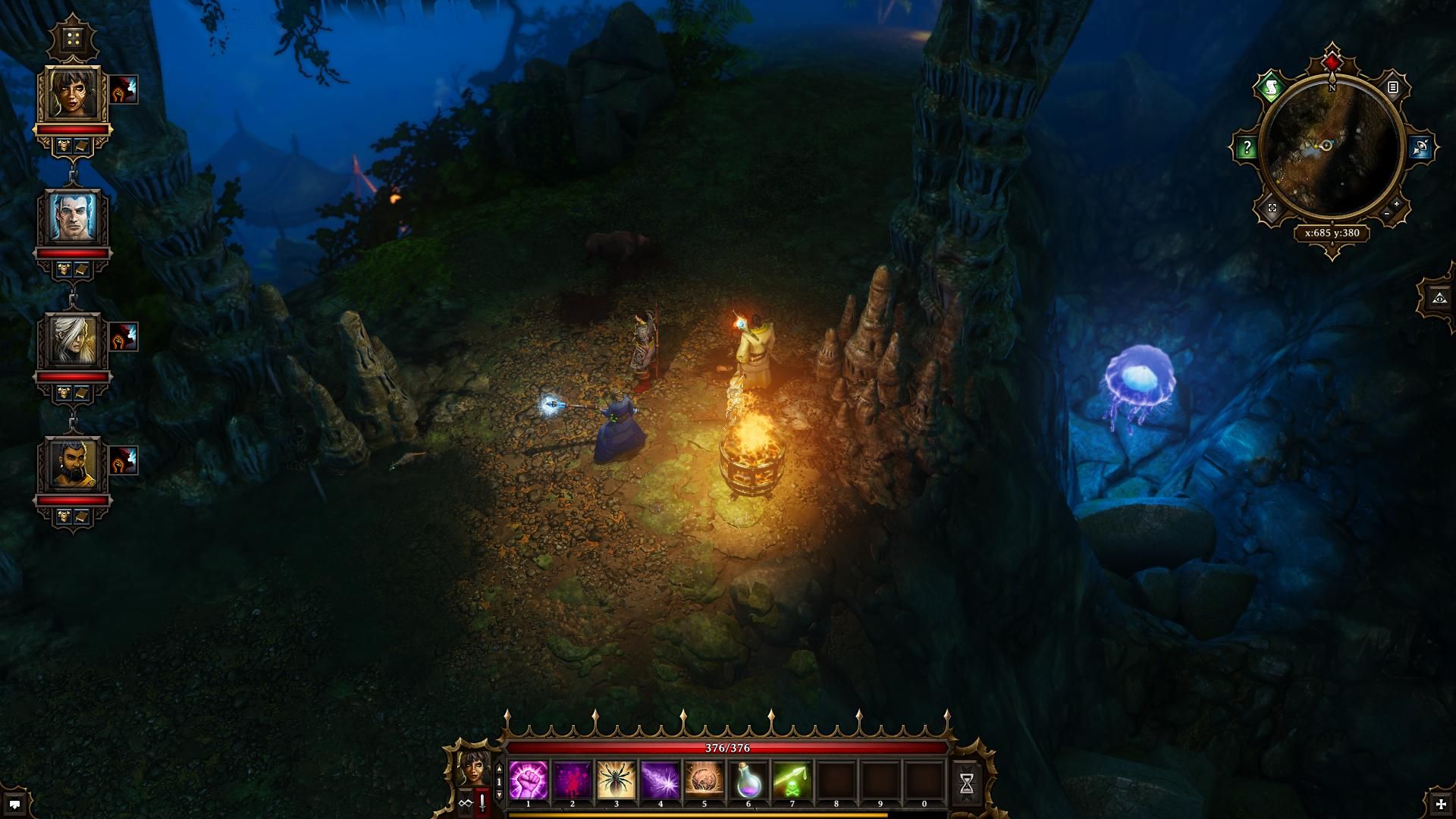
Almost every area is visually unique and engaging
Divinity starts off with you controlling two Source Hunters, mercenaries of sorts who try to find and stop those who are using “source,” which is apparently evil. Your mission is to investigate the murder of a councilor in a small sea side town; you are tasked with finding the culprit and determining if source was involved. After a brief tutorial where you are introduced to the basics of combat, conversation and exploration, you arrive at a large town. At this point, after about thirty minutes of playing, you are simply instructed to solve the murder. So begins an agonizing process of running around the town talking to everyone you can find, searching every corner and every box in hopes of triggering a journal update that will let you progress with the quest. You are given almost no direction about where to start, and even when you do find a clue or a lead, tracking it down can be a real headache. Simply finding the house of the person you want to talk to can become a tedious, frustrating task.
This wild goose chase lasted about five hours for me, and at the end of it I was feeling very negative about Divinity: Original Sin. There hadn't been any combat since the tutorial, I was frustrated by the amount of time it took my party of four to travel around the town, and I already had a bone to pick with the tone of the game. When approaching the town at the start, some people you talk to describe it as a troubled place with loads of problems. Upon arrival, I found a cheerful community with vendors making puns as you walk past and citizens happily chatting to each other while cheery music plays in the background. Apparently you can kill any NPC in the game, and I was very tempted to test this out on the cheese merchant who spouts the same annoying lines on a loop about every 3 seconds. Never mind the undead skeletons and Orcs lurking outside the city walls and the bloody murder scene in the town's Inn. I was frustrated by the fact that I had chosen to start with a Knight and a Witch, so a lot of potential solutions I came across did not work since I couldn't pick locks. Thankfully, once I had completed one of the worst opening sequences to a game I can recall, things started to improve.
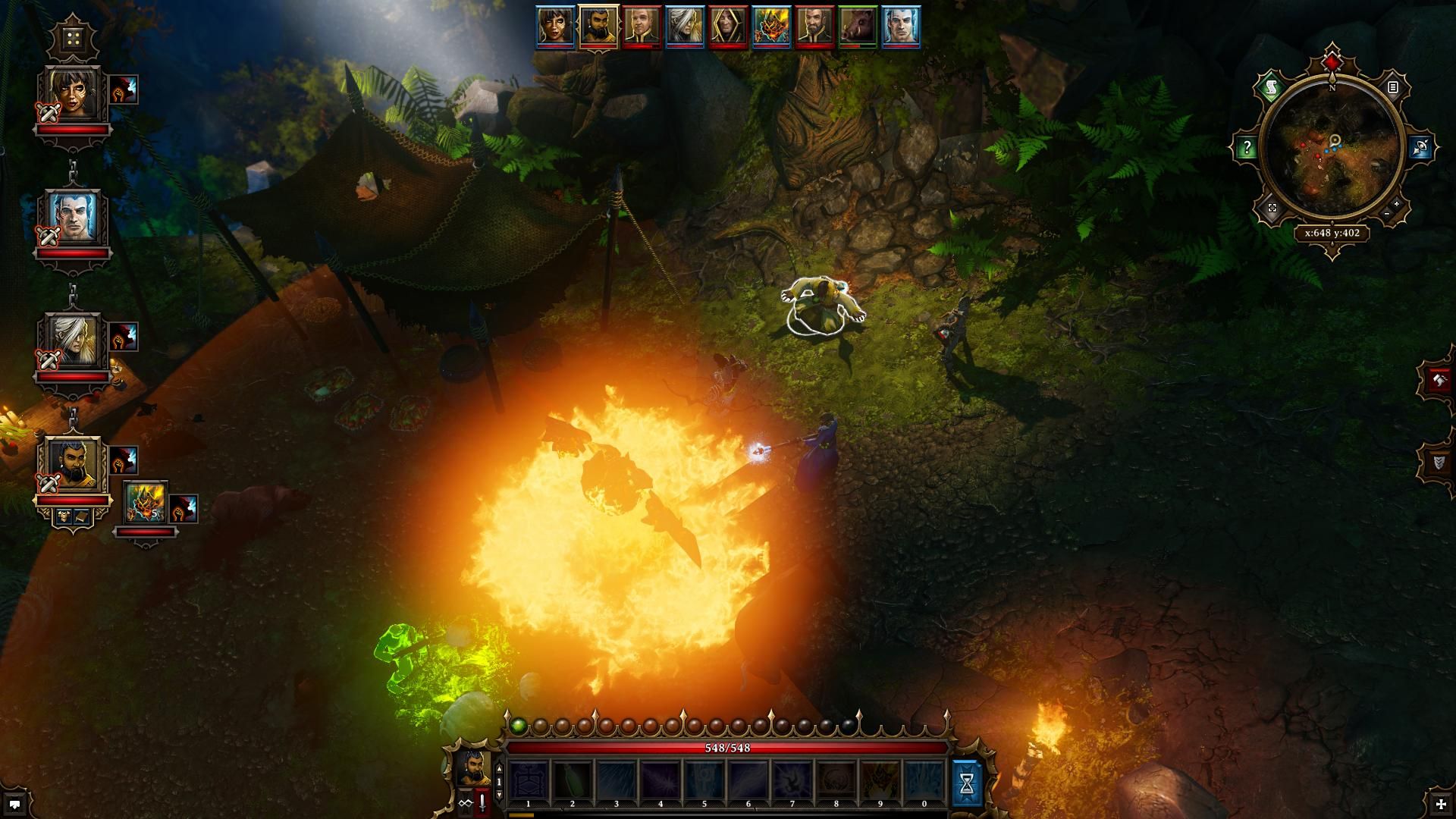
Combining elements makes for tactically diverse combat
Once I solved the first leg of the murder quest and was finally strong enough to venture outside of the city walls, I was at long last able to sink my teeth into the combat. Divinity Original Sin uses a turn-based combat system that revolves around using the five or so elements in the game as wisely as possible. You can douse someone in water and then zap them with electricity, immobilizing them for a turn. You can freeze enemies, poison them with toxic ooze and light them on fire. Toxic ooze interacts with fire to create an explosion. Similarly, you can use water to douse allies who are ablaze. Each combat encounter is hand crafted and generally quite challenging, and after spending some time with this excellent combat some other aspects of the game came into focus as well. You get to control a party of up to four adventurers, and building them into an effective combat team is very rewarding as the choices you make when leveling up and choosing gear and skills result in dramatic changes during hostile encounters.
While each character starts out as a specific class, you can mould them to your liking in order to make your group as effective as possible. You might give your knight the ability to use bows so he can utilize special arrows while still being able to wield a sword when enemies get close. You might turn your wizard into a healer, or someone who specializes in summoning creatures. While at the start of the game you will struggle to defeat enemies who are the same level as you, as you become more familiar with the combat and the strengths and weaknesses of your characters you can start to win fights with much higher level enemies simply by making smart use of your abilities and your environment. You might be able to draw enemies into a puddle and then zap it with lightning, stunning the entire group. Or you might create a sheet of ice at a choke point, causing enemies to slip and fall as they approach you. The combat in Divinity: Original Sin is what kept me playing past the awful introduction, and I am glad I did as there are some great moments as you progress through the game.
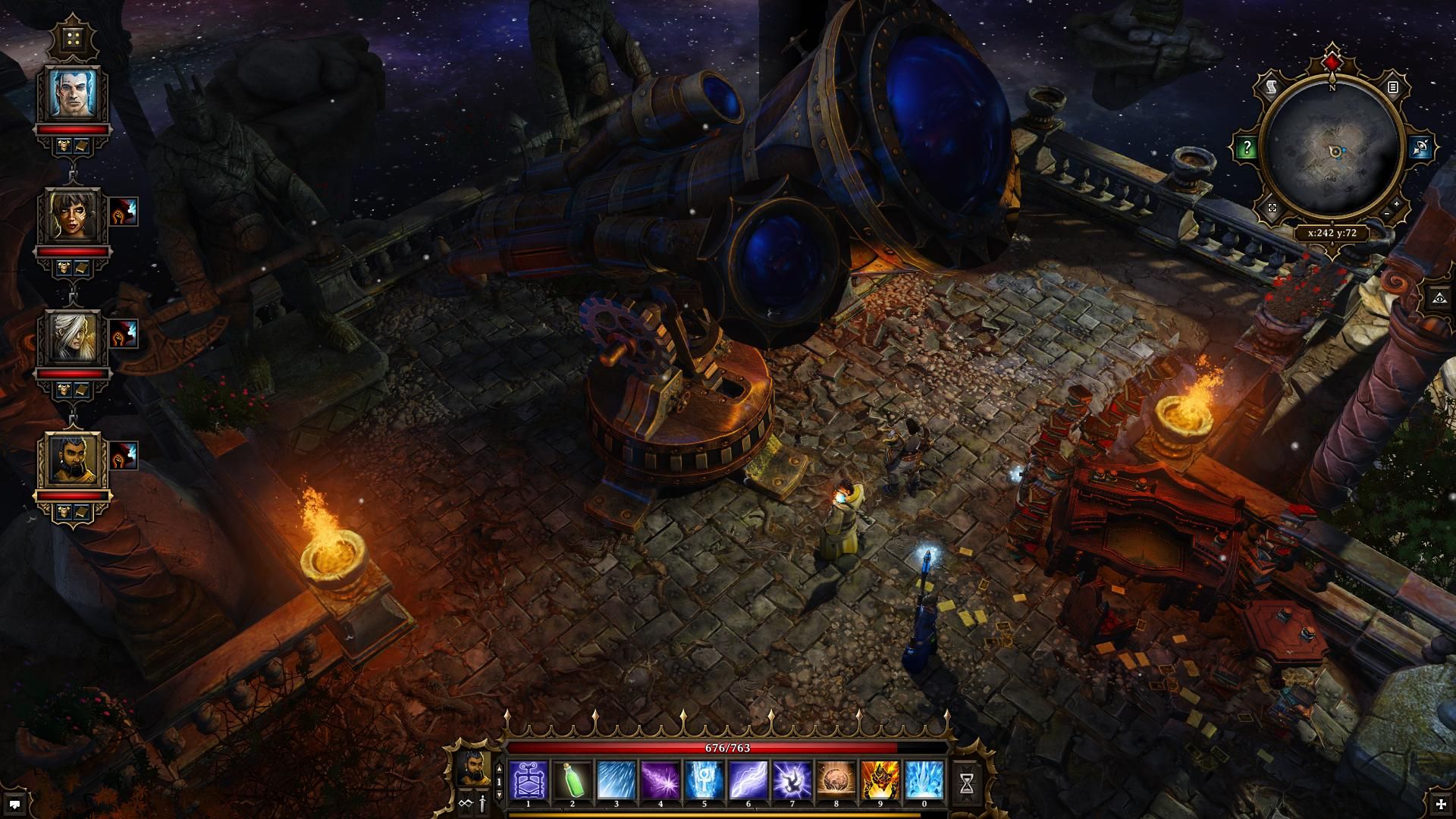
The "End of Time" is a bewildering but pretty place to store things
Sadly, almost none of these moments are linked to the main story. The initial murder quest sends you off on a series of tangential investigations that usually involve a more or less self-contained sub-story. Some of these fare better than others, with the mysterious cult controlling the second area of the game being the only thing to really hold my interest. All of this is loosely held together with trips made to a sort of alternate dimension called the “end of time” where you are given a variety of bewildering options and lots of vague exposition about “source” and why it is so evil. This alternate area of the game can be accessed at any time and if nothing else serves as a visually interesting place to store excess gear and party members. You start the game with two core characters who you are stuck with for the duration, but the other two slots can be filled with people you find in your travels, as in Dragon Age Origins.
Outside of combat, you will spend your time exploring and talking to a large variety of NPC's. The exploration is generally quite good due to detailed areas with lots of hidden loot rewarding thorough investigation of nooks and crannies. Exploration isn't something you do for fun either; often your tasks are extremely vague and you need to spend a lot of time roaming around before you can figure out how to proceed. For instance, when you learn of the likely culprit of the murder towards the beginning of the game, you are told to simply look “in the north” for their location. Another time I was told the item I need is “stashed somewhere in the woods.” While I don't mind the lack of hand holding, a lot of the time the lack of direction can be annoying since overlooking some minor detail might prevent you from progress. In the quest mentioned above, I finally found the correct route, but it was as much west as north. This is a good indicator of how most of the game will proceed; you rarely know where to go, and once you figure that out, finding out what to do when you get there is usually another ordeal unto itself. Even a little bit more direction would have gone a long way to alleviating the constant dead ends you will face when progressing through the game, and while progress is certainly more rewarding as a result, it doesn't negate the aimless hours spent seeking it.
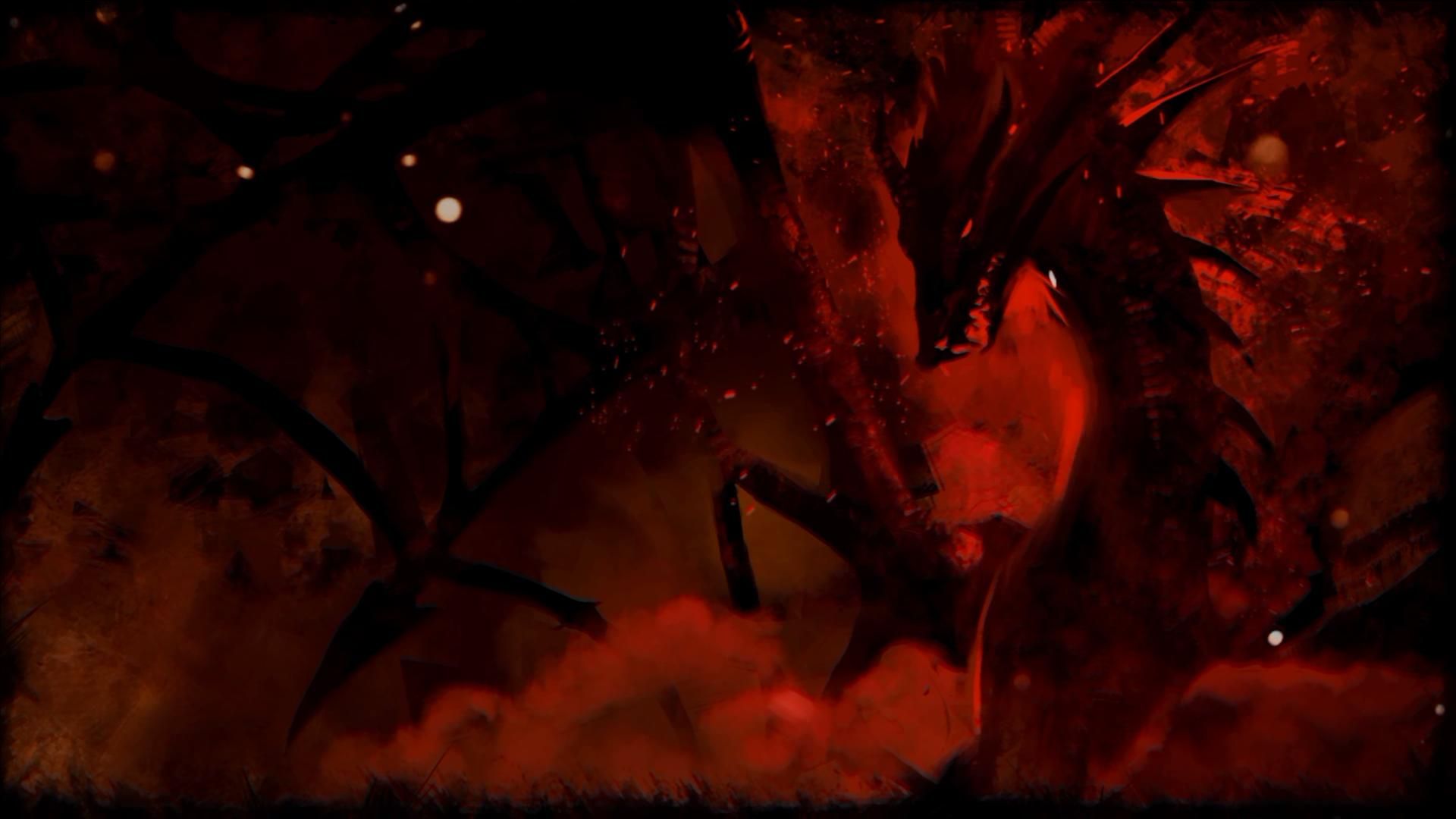
Cutscenes are stylish but tell a lackluster tale
Objectives are often hidden behind environmental puzzles which involve dealing with a variety of traps and hidden dangers. How easily you overcome these puzzles has a lot to do with your perception skill which allows you to see items like mines and pressure plates which trigger traps. Often you will need to move objects around in order to solve these problems, and doing this can be a bit of a frustration. The game can be very picky about where and how far you can move objects, and getting a barrel or box into the exact right location can be a finicky, irritating process. One frustrating puzzle in the middle of the game highlights this as you must place objects on a variety of pressure plates in a limited amount of time. However apart from this sometimes uncooperative system, the puzzles are generally clever and you are usually rewarded with good loot or quest progress at the end.
Figuring out how to progress will often hinge on talking to the right individuals. There is a lot of dialogue in Divinity, and while it is generally well written, the goofy tone of the game means there is not a lot of real substance to it. The Divinity universe is quite light and colourful and does not take itself at all seriously. Dialogue is laced with pop culture references which while amusing don't exactly lend much gravitas or depth to the world and characters. While it initially seems like there is a huge amount of dialogue in the game, often different characters will have the same information if not the same lines; if you talk to every single person you will quickly run into redundant information. There are a good number of interesting individuals you will talk to, including animals if you invest in the right skill. You will talk to a crab who wants to be your friend, a lonely troll, a riddling mushroom and a variety of mice, dogs and rabbits amongst others who often serve as the game's charming hint system. You can also have conversations amongst your party, and when you need to give an answer or make a decision the two party leaders can opt to disagree with each other.
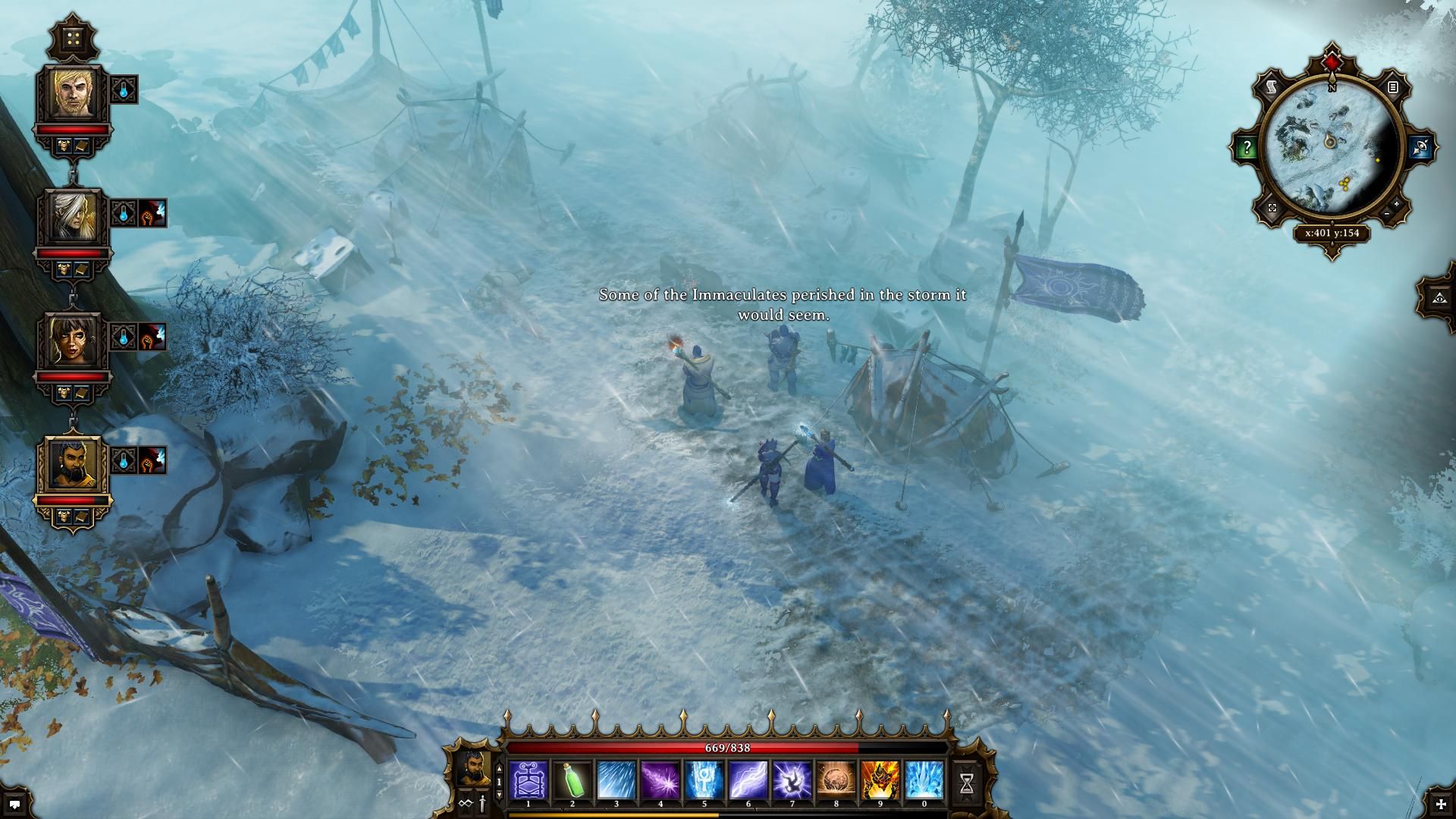
Some environments will cripple your team
This inter-party decision making mostly comes into focus when playing co-op, which is fully supported in the game. When a disagreement crops up, it is resolved with a quick game of rock-paper-scissors. When playing co-op, each player controls one of the two main source hunters and one of the secondary characters both in and out of combat. Apart from the more meaningful inter-party role-playing, the game remains much the same when playing with another person. If one player has their party members too far from the other when they enter combat, they will not be dragged in automatically, instead it is in the best interest of the two players to stay close together. This also applies to conversations; inter-party disagreements only occur when both players are in a conversation with the same NPC. However the player who did not initiate the conversation has no control over how fast the messages appear and this can make it hard to read everything in time. The dialogue often resets between conversations, which makes sense in co-op, but causes some jarring moments when playing alone.
Visually the game is quite pleasant with vibrant colours, well implemented depth of field effects and detailed environments. Technically the game is nothing special, but the way it is put together makes it very easy on the eyes, especially when it starts raining or when the air is filled with pollen, whirling snow or sand. Everything feels hand crafted and often oozes charm. I ran into no issues running the game, although I did encounter some minor bugs with the camera when moving my party down hills. The audio levels were also a bit wacky to start with; the merchants (that damn cheese merchant in particular) were incredibly loud and would drown out a lot of other sounds, and the music was often overpowering, but fortunately I was able to remedy this thanks to separate audio sliders. The music itself is mostly quite cheery and at times a bit obnoxious, further impressing the light, goofy tone of the game.
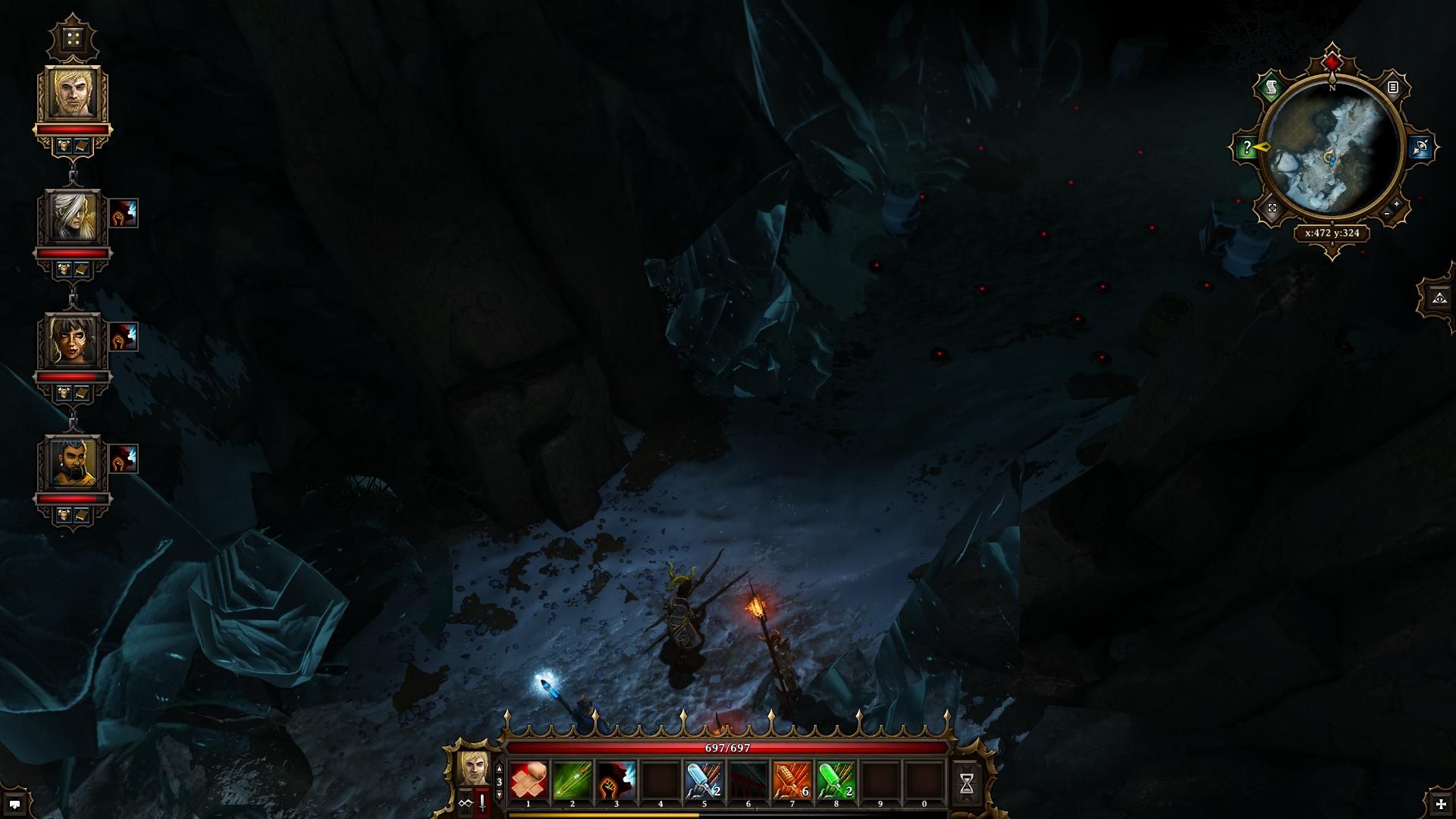
Many areas are filled with traps rather than enemies
It is abundantly clear that Divinity: Original Sin was hand crafted with love and care, and that is why it pains me that I found so much of it aimless and frustrating. The lack of hand holding, challenging combat and complex character customization mean you need to take the game seriously, but at the same time it has a goofy, light tone and flimsy central narrative. This disconnect between the demanding gameplay and lighthearted tone are my biggest gripe with Divinity: Original Sin, and sadly this isn't something that can be fixed with patches. Vague quest objectives are also a chronic issue that can lead to lots of running around and backtracking to see if you missed some minor detail. If you want an old-school RPG that will take dozens of hours to complete and force you to think and figure things out for yourself, Divinity Original Sin will scratch that itch, but I personally found myself frustrated with the lack of direction in many quests and the lack of substance in the world.
 Comments
Comments













